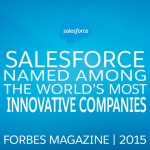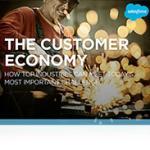10 Steps To Staying Ahead Of Tech Trends



There’s a lot less risk in being a “fast follower” of tech trends versus being an early adopter. Yet the chance that those tools will become commonplace in your industry — and possibly become part of your customer’s standard expectation — means lagging tech trends can pose the greatest risk of all.
There’s a lot less risk in being a “fast follower” of tech trends versus being an early adopter. Waiting until a competitor tries (and fails) to use new digital tools probably feels like the wisest course of action in many cases. Yet the chance that those tools will become commonplace in your industry — and possibly become part of your customer’s standard expectation — means lagging tech trends can pose the greatest risk of all.
Don’t let this happen to you. Instead, plow ahead as the true innovators do:
Study and Borrow
Sometimes the best ideas come from beyond your own walls. Whether reading business publications, attending industry conferences or listening to what companies similar to yours are saying on social media, pay attention to what technology they’re using. Look and listen to results-based information, rather than mere enthusiasm for a trend. For example, one company might be quick to adopt a particular mobile device based on consumer hype, but pay closer attention to the firm that discusses how data segmentation improved their e-mail open rates.
Write A Strong ‘If/Then’ Statement
In order to frame your objectives in adopting new technology, think past the traditional approach of “we want to be more productive,” or “we hope to save costs.” Instead, think of some of the common processes and tasks that take place in the course of your team’s work and use an if/then statement to frame it. For example, “If we use a mobile app to access CRM en route to a customer meeting versus waiting until we pull data at our desktop, then we’ll save one to two hours.”
Form An IT Department Alliance
Your servers may not always operate with 100% reliability. The printer gets jammed for no reason. You feel like you have to constantly ask permission to use new applications. If you really want to be a first-mover on game-changing technologies, however, brokering a healthy relationship with the IT department – which in some SMBs might simply be the owner – is a critical starting point. Position what you need as less of an order than the beginning of a collaborative effort to move the company forward. Talk about how you’ll both demonstrate leadership and value and what you can learn from each other. Also, make sure you build in enough lead time – technology staff are charged with protecting data and ensuring compliance in some cases, so they won’t want to rush a decision or deployment.
Pick A Pilot Project
Let’s suppose you’ve heard about the promise of predictive intelligence and want to see if it could make a measurable difference in how well your marketing campaigns create demand or your sales team close deals. Applying predictive intelligence across everything you do may seem too disruptive to the rest of the organization, so look for low-risk but meaningful niche areas. This could be everything from a product that’s already been growing steadily to a new offering that is being planned for release later in the year. Starting small is often the fastest way of being able to start at all.
Prioritize By Phases
When you buy your first car, you expect to be able to immediately drive it anywhere you want. Technology adoption isn’t always like that. That’s because unlike buying a car, it can take time to learn how to “drive” the technology (in terms of understanding all the features) and learning how the roads work (the impact on business processes). As you map out what a technology like marketing automation could do, think about what benefits or use cases you want to pursue in “phase one” (which could be as short as one month or as long as a year) and what you’ll incrementally add in terms of process changes and the application of additional features. This will keep everyone calm through the transition.
Allow For Setbacks And Failures
No matter how promising the technology, there is often a dissenter in organizations who talk about what they believe will never work and what they are sure will go wrong. Instead of disputing or ignoring that person, embrace their worry-wart nature and plan accordingly. To what extent can their worst-case scenario be mitigated, and if something even more unexpected happens, what is the plan for communicating to all the necessary stakeholders and reverting to an earlier process? A realistic conversation about failure will make actual failures a lot easier to bear.
Revisit (And Refine) Objectives Frequently
Remember those “if/then” statements? They were probably developed before you talked to IT, other people who might be affected by adopting a new tool, and before you fully understood what the technology was capable of. How accurate do those in/then statements look now, and should you think about rewording them? You can still stick to your original goal, but how you articulate it should evolve as the project gets closer to execution.
Communicate To Customers
You don’t need to create a brochure informing your target audience how you’re now adopting marketing analytics. On the other hand, ensure that if they receive new kinds of communication from the organization – perhaps more personalized and contextual – they understand what you’re trying to do. Offer feedback mechanisms, even if it’s just an email address, to help gauge reactions and to improve your approach.
Celebrate and Share
If technology allows you to make real inroads in marketing or sales, don’t just hold a pizza party for the staff. Now it’s your turn to share your story in those business publications and start appearing on stage at industry events. The degree to which your tech strategy becomes a talking point or marketing tool for your brand is another metric to consider as you look at the overall benefits.
Stay A Step Ahead
The early adopters who first started working with cell phones quickly realized they were only at the start of the journey. They moved on to making or using apps, employing lean/agile methods of working with IT and stay close to where innovation is happening. The same goes for you. Once you’ve made the cultural shift from fast follower to early adopter, there’s no turning back.
For more data on how top-performing companies are often early tech adopters, download the 2016 State of Marketing, a new report from Salesforce.




















